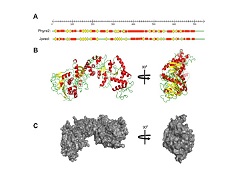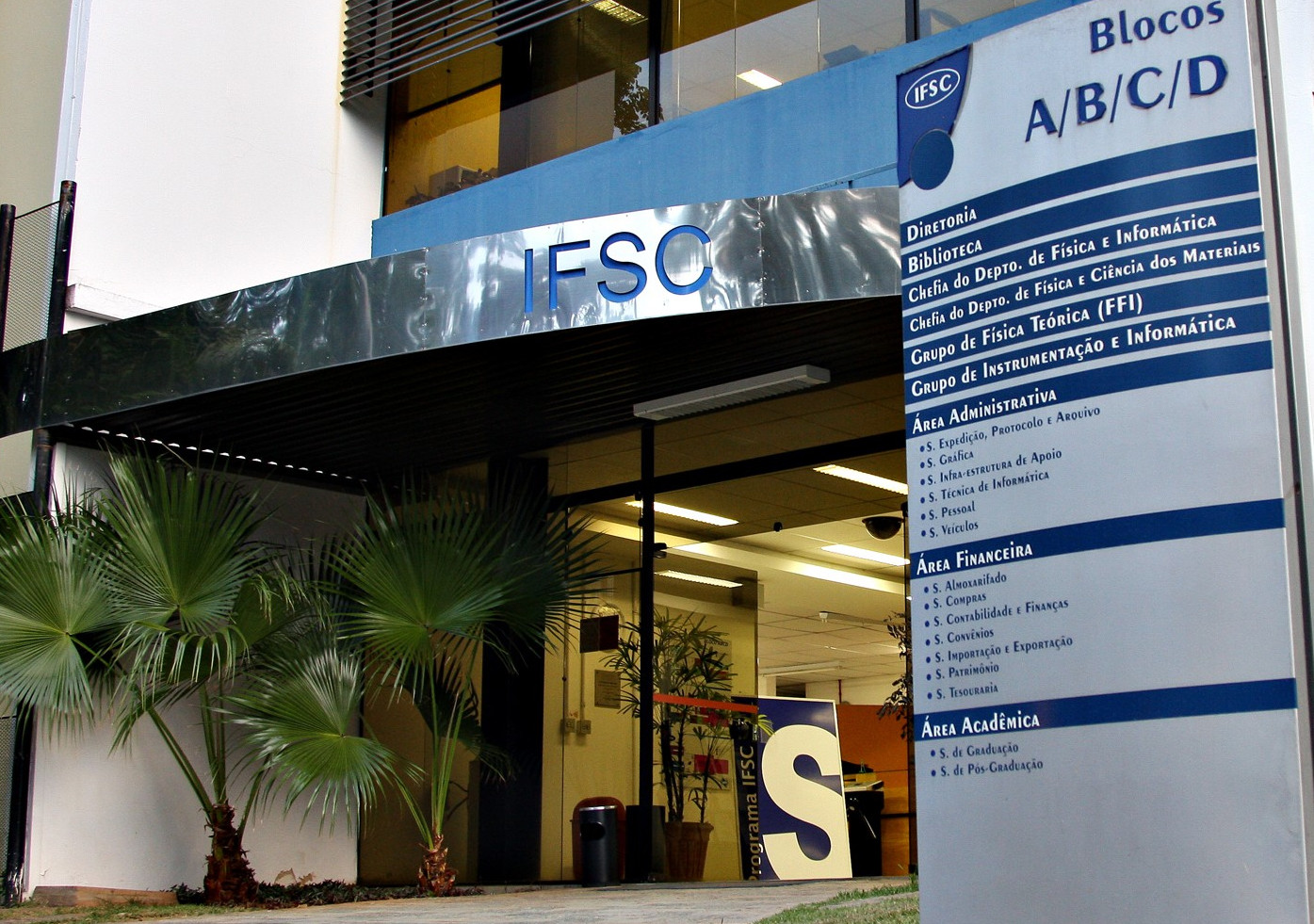Lipophosphoglycan 3 from leishmania infantum chagasi binds heparin with micromolar affinity.
MARTINS, Thaís Viana Fialho; ZERAIK, Ana Eliza; ALVES, Natália Oliveira; OLIVEIRA, Leandro Licursi de; MENDES, Tiago Antônio de Oliveira; DE MARCO, Ricardo; MARQUES-DA-SILVA, Eduardo de Almeida.
MARTINS, Thaís Viana Fialho; ZERAIK, Ana Eliza; ALVES, Natália Oliveira; OLIVEIRA, Leandro Licursi de; MENDES, Tiago Antônio de Oliveira; DE MARCO, Ricardo; MARQUES-DA-SILVA, Eduardo de Almeida.
 Abstract: Leishmania infantum chagasi is an intracellular protozoan parasite responsible for visceral leishmaniasis, a fatal disease in humans. Heparin-binding proteins (HBPs) are proteins that bind to carbohydrates present in glycoproteins or glycolipids. Evidence suggests that HBPs present on Leishmania surface participate in the adhesion and invasion of parasites to tissues of both invertebrate and vertebrate hosts. In this study, we identified the product with an HSP90 (heat shock protein 90) domain encoded by lipophosphoglycan (LPG3) gene as a L infantum chagasi HBP (HBPLc). Structural analysis using the LPG3 recombinant protein suggests that it is organized as a tetramer. Binding analysis confirms that it is capable of binding heparin with micromolar affinity. Inhibition of adenosine triphosphatase activity in the presence of heparin, molecular modeling, and in silico docking analysis suggests that heparin-binding site superimposes with the adenosine triphosphate-binding site. Together, these results show new properties of LPG3 and suggest an important role in leishmaniasis. Abstract: Leishmania infantum chagasi is an intracellular protozoan parasite responsible for visceral leishmaniasis, a fatal disease in humans. Heparin-binding proteins (HBPs) are proteins that bind to carbohydrates present in glycoproteins or glycolipids. Evidence suggests that HBPs present on Leishmania surface participate in the adhesion and invasion of parasites to tissues of both invertebrate and vertebrate hosts. In this study, we identified the product with an HSP90 (heat shock protein 90) domain encoded by lipophosphoglycan (LPG3) gene as a L infantum chagasi HBP (HBPLc). Structural analysis using the LPG3 recombinant protein suggests that it is organized as a tetramer. Binding analysis confirms that it is capable of binding heparin with micromolar affinity. Inhibition of adenosine triphosphatase activity in the presence of heparin, molecular modeling, and in silico docking analysis suggests that heparin-binding site superimposes with the adenosine triphosphate-binding site. Together, these results show new properties of LPG3 and suggest an important role in leishmaniasis. | |
| Bioinformatics and Biology Insights |
| v. 12, p. 1-12 - Ano: 2018 |
| http://dx.doi.org/10.1177/1177932218763363 |  @article={002876822,author = {MARTINS, Thaís Viana Fialho; ZERAIK, Ana Eliza; ALVES, Natália Oliveira; OLIVEIRA, Leandro Licursi de; MENDES, Tiago Antônio de Oliveira; DE MARCO, Ricardo; MARQUES-DA-SILVA, Eduardo de Almeida.},title={Lipophosphoglycan 3 from leishmania infantum chagasi binds heparin with micromolar affinity},journal={Bioinformatics and Biology Insights},note={v. 12, p. 1-12},year={2018}} @article={002876822,author = {MARTINS, Thaís Viana Fialho; ZERAIK, Ana Eliza; ALVES, Natália Oliveira; OLIVEIRA, Leandro Licursi de; MENDES, Tiago Antônio de Oliveira; DE MARCO, Ricardo; MARQUES-DA-SILVA, Eduardo de Almeida.},title={Lipophosphoglycan 3 from leishmania infantum chagasi binds heparin with micromolar affinity},journal={Bioinformatics and Biology Insights},note={v. 12, p. 1-12},year={2018}} |





